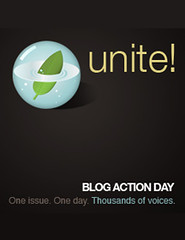When it comes to communication, the most impacting miscommunication almost never appears on the news, in print, or anywhere near the marketing department. It happens on the front line, and the people impacted are customers, one at a time.
The two most common causes of miscommunication for larger companies is trending to be passive communication (eg. expecting customers to stay up to date on the company Web site) and scripted employees (eg. requiring representatives to work from scripts even in non-script circumstances).
There are plenty of examples that we’ve helped several companies resolve recently, but I thought it might be fun to share some personal examples to illustrate the point.
Passive Communication.
Cox Communications Inc. recently implemented a new e-mail filtering program to block a specific Internet port. The only mention of the service change is on their Web site.
The reasoning behind the implementation was a good idea, but they did not notify their customers of the change in service beyond posting to their Web site. In fact, we may have never known there was potential problem had it not been for a small number of clients and contacts using Cox as their primary e-mail provider. For some reason, our Cox service provider was disallowing our POP e-mails to Cox customer clients.
Their customer service representatives are now investing time to research the problem and provide a solution. To their customer service department’s credit (once the script questions were ruled out), they immediately upgraded their level service, even calling back with updates rather than leaving us on hold.
While the person-to-person customer service was great, I’m still wondering if better front-end communication might have prevented any service interruption.
Scripted Employees.
It works in reverse too. Not all companies are so fortunate to have proactive employees willing to research the impact to their customers. Some customer service representatives seem too lazy to move off script. This recently occurred when one of our last payments to Volkswagen Credit disappeared in the mail.
We were notified of the missing payment, first by receiving our next payment coupon, which required a double payment, and then by an automated call from the company on the same day the double payment went out. (Again, these are passive communication solution as opposed to a letter or live person phone call). Regardless, my wife called immediately about her car.
Despite learning the payment was likely lost in the mail, the first customer service representative insisted she answer personal questions, without explanation, including about her employment status. Not only did it seemed overly intrusive for a lost payment call, the representative informed her that the missing payment would be reported because the company had allegedly made numerous calls to notify us. Knowing that was not true, she then asked to speak to a supervisor.
“No, you may not speak to anyone else. I’m handling your account.”
For real? As unbelievable as it sounds, yes. She took his name and number and then promptly ended the call. She called back to speak to someone new. The difference was like night and day.
“I see you’ve never missed a payment. I’ll clear this up right now.”
As for those calls? They never happened. The first representative made it up. As for the general ill-tempered representative? The second representative was left having to apologize. As for the personal questions? Volkswagen Credit has recently created a program to save people who are struggling financially from defaulting on their payments. It’s a great idea, but it didn’t apply to our circumstance nor did the first representative mention “why” he needed to ask.
Mixed Messages.
Considering how many companies lean toward intrusive marketing to push products and services (I even had a mortgage company come to my door yesterday), it’s equally amazing how many become passive once you become a customer (I hope you know that periodic calls to your credit card and insurance company almost always result in lower rates).
As for the examples above, proactive communication seems like it could have been the best answer to keep everyone happy. And, once we, as customers, were forced to take proactive steps, the outcome was tied to how empowered the representatives were to make decisions.
Sure, some executives think scripting employees helps representatives stay on the same page. In reality, scripting employees only leads to one-way communication, which we already know is no communication at all.
The solution is somewhere in the middle. Proactive post-purchase communication and strong internal communication can help develop a consistent, and not overly scripted, level of service that empowers employees and reinforces to the customer that they have the right company.

The two most common causes of miscommunication for larger companies is trending to be passive communication (eg. expecting customers to stay up to date on the company Web site) and scripted employees (eg. requiring representatives to work from scripts even in non-script circumstances).
There are plenty of examples that we’ve helped several companies resolve recently, but I thought it might be fun to share some personal examples to illustrate the point.
Passive Communication.
Cox Communications Inc. recently implemented a new e-mail filtering program to block a specific Internet port. The only mention of the service change is on their Web site.
The reasoning behind the implementation was a good idea, but they did not notify their customers of the change in service beyond posting to their Web site. In fact, we may have never known there was potential problem had it not been for a small number of clients and contacts using Cox as their primary e-mail provider. For some reason, our Cox service provider was disallowing our POP e-mails to Cox customer clients.
Their customer service representatives are now investing time to research the problem and provide a solution. To their customer service department’s credit (once the script questions were ruled out), they immediately upgraded their level service, even calling back with updates rather than leaving us on hold.
While the person-to-person customer service was great, I’m still wondering if better front-end communication might have prevented any service interruption.
Scripted Employees.
It works in reverse too. Not all companies are so fortunate to have proactive employees willing to research the impact to their customers. Some customer service representatives seem too lazy to move off script. This recently occurred when one of our last payments to Volkswagen Credit disappeared in the mail.
We were notified of the missing payment, first by receiving our next payment coupon, which required a double payment, and then by an automated call from the company on the same day the double payment went out. (Again, these are passive communication solution as opposed to a letter or live person phone call). Regardless, my wife called immediately about her car.
Despite learning the payment was likely lost in the mail, the first customer service representative insisted she answer personal questions, without explanation, including about her employment status. Not only did it seemed overly intrusive for a lost payment call, the representative informed her that the missing payment would be reported because the company had allegedly made numerous calls to notify us. Knowing that was not true, she then asked to speak to a supervisor.
“No, you may not speak to anyone else. I’m handling your account.”
For real? As unbelievable as it sounds, yes. She took his name and number and then promptly ended the call. She called back to speak to someone new. The difference was like night and day.
“I see you’ve never missed a payment. I’ll clear this up right now.”
As for those calls? They never happened. The first representative made it up. As for the general ill-tempered representative? The second representative was left having to apologize. As for the personal questions? Volkswagen Credit has recently created a program to save people who are struggling financially from defaulting on their payments. It’s a great idea, but it didn’t apply to our circumstance nor did the first representative mention “why” he needed to ask.
Mixed Messages.
Considering how many companies lean toward intrusive marketing to push products and services (I even had a mortgage company come to my door yesterday), it’s equally amazing how many become passive once you become a customer (I hope you know that periodic calls to your credit card and insurance company almost always result in lower rates).
As for the examples above, proactive communication seems like it could have been the best answer to keep everyone happy. And, once we, as customers, were forced to take proactive steps, the outcome was tied to how empowered the representatives were to make decisions.
Sure, some executives think scripting employees helps representatives stay on the same page. In reality, scripting employees only leads to one-way communication, which we already know is no communication at all.
The solution is somewhere in the middle. Proactive post-purchase communication and strong internal communication can help develop a consistent, and not overly scripted, level of service that empowers employees and reinforces to the customer that they have the right company.


































